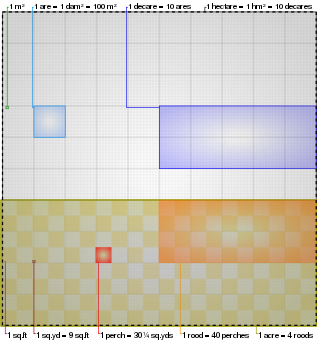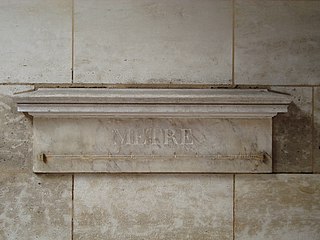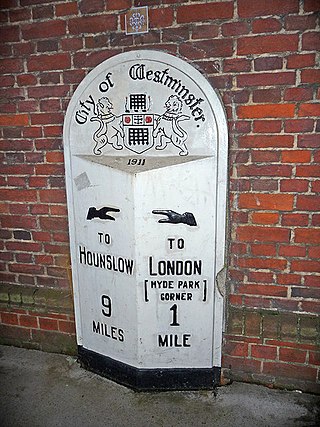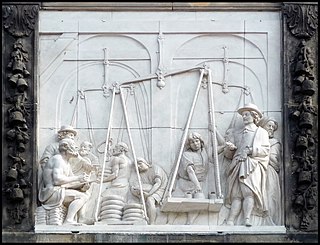![Allegory of measurement, the
decempeda
is under the woman's feet with Xs marking the feet subdivisions (by Giovanni Zaratino Castellini [nl], 17th century) Allegory of measurement (Giovanni Zaratino Castellini).jpg](http://upload.wikimedia.org/wikipedia/commons/thumb/1/1b/Allegory_of_measurement_%28Giovanni_Zaratino_Castellini%29.jpg/220px-Allegory_of_measurement_%28Giovanni_Zaratino_Castellini%29.jpg)
The pertica (from Latin : pertica, measuring rod [1] ) was a pre-metric unit of either length or area, with the values varying by location. For a similar unit in Northern Europe, see perch.
![Allegory of measurement, the
decempeda
is under the woman's feet with Xs marking the feet subdivisions (by Giovanni Zaratino Castellini [nl], 17th century) Allegory of measurement (Giovanni Zaratino Castellini).jpg](http://upload.wikimedia.org/wikipedia/commons/thumb/1/1b/Allegory_of_measurement_%28Giovanni_Zaratino_Castellini%29.jpg/220px-Allegory_of_measurement_%28Giovanni_Zaratino_Castellini%29.jpg)
The pertica (from Latin : pertica, measuring rod [1] ) was a pre-metric unit of either length or area, with the values varying by location. For a similar unit in Northern Europe, see perch.
In the Ancient Rome, pertica, also called decempeda, [2] was a unit of length, usually equal to 10 Roman feet (pedes), or approximately 2.96 meters. [3] The variants of pertica contained 12 [4] and 15 [5] pedes. Isidore of Seville (per Codex Gudianus) states that sometimes a pertica of 10, 12, 15, or 17 pedes was used by agrimensores (Roman land surveyors) to accommodate the richness of the soil and approximately even the yield per unit area. [6] [7] Kidson [8] highlights the near-perfect match between the pertica of 17 pedes and the English version of the perch.
The same names, pertica and decempeda, were used for the surveyor's tool, a rod of the corresponding length with subdivision into smaller units, similar to the Ancient Greek kalamos. [9]
The linear unit in Italy was about 3 meters, area unit contained about 600 square meters. After switching to the metric system, the unit became equal to 1 decare. [3]
![Viennese pertica is on top, Rovereto pertica at the bottom (Palazzo Pretorio, Rovereto [it]) PerticaViennese.jpg](http://upload.wikimedia.org/wikipedia/commons/thumb/a/a2/PerticaViennese.jpg/220px-PerticaViennese.jpg)
The regional area values significantly varied per province (in square meters): [10]

The acre is a unit of land area used in the British imperial and the United States customary systems. It is traditionally defined as the area of one chain by one furlong, which is exactly equal to 10 square chains, 1⁄640 of a square mile, 4,840 square yards, or 43,560 square feet, and approximately 4,047 m2, or about 40% of a hectare. Based upon the international yard and pound agreement of 1959, an acre may be declared as exactly 4,046.8564224 square metres. The acre is sometimes abbreviated ac but is usually spelled out as the word "acre".

The metre is the base unit of length in the International System of Units (SI). Since 2019 the metre has been defined as the length of the path travelled by light in vacuum during a time interval of 1/299792458 of a second, where the second is defined by a hyperfine transition frequency of caesium.

The mile, sometimes the international mile or statute mile to distinguish it from other miles, is a British imperial unit and United States customary unit of distance; both are based on the older English unit of length equal to 5,280 English feet, or 1,760 yards. The statute mile was standardised between the Commonwealth of Nations and the United States by an international agreement in 1959, when it was formally redefined with respect to SI units as exactly 1,609.344 metres.

The yard is an English unit of length in both the British imperial and US customary systems of measurement equalling 3 feet or 36 inches. Since 1959 it has been by international agreement standardized as exactly 0.9144 meter. A distance of 1,760 yards is equal to 1 mile.

A ruler, sometimes called a rule, scale or a line gauge, is an instrument used to make length measurements, whereby a user estimates a length by reading from a series of markings called "rules" along an edge of the device. Commonly the instrument is rigid and the edge itself is a straightedge, which additionally allows one to draw straight lines. Some rulers, such as cloth or paper tape measures, are non-rigid. Specialty rulers exist that have flexible edges that retain a chosen shape; these find use in sewing, arts, and crafts.

The foot is a unit of length in the British imperial and United States customary systems of measurement. The prime symbol, ′, is commonly used to represent the foot. In both customary and imperial units, one foot comprises 12 inches, and one yard comprises three feet. Since an international agreement in 1959, the foot is defined as equal to exactly 0.3048 meters.
The foot is the basic repeating rhythmic unit that forms part of a line of verse in most Indo-European traditions of poetry, including English accentual-syllabic verse and the quantitative meter of classical ancient Greek and Latin poetry. The unit is composed of syllables, and is usually two, three, or four syllables in length. The most common feet in English are the iamb, trochee, dactyl, and anapaest. The foot might be compared to a bar, or a beat divided into pulse groups, in musical notation.

A unit of length refers to any arbitrarily chosen and accepted reference standard for measurement of length. The most common units in modern use are the metric units, used in every country globally. In the United States the U.S. customary units are also in use. British Imperial units are still used for some purposes in the United Kingdom and some other countries. The metric system is sub-divided into SI and non-SI units.

A tape measure or measuring tape is a flexible ruler used to measure length or distance.
The rod, perch, or pole is a surveyor's tool and unit of length of various historical definitions. In British imperial and US customary units it is defined as 16+1⁄2 feet, equal to exactly 1⁄320 of a mile, or 5+1⁄2 yards, and is exactly 5.0292 meters. The rod is useful as a unit of length because integer multiples of it can form one acre of square measure (area). The 'perfect acre' is a rectangular area of 43,560 square feet, bounded by sides 660 feet long and 66 feet wide or, equivalently, 40 rods by 4 rods. An acre is therefore 160 square rods or 10 square chains.
The chain is a unit of length equal to 66 feet, used in both the US customary and Imperial unit systems. It is subdivided into 100 links. There are 10 chains in a furlong, and 80 chains in one statute mile. In metric terms, it is 20.1168 m long. By extension, chainage is the distance along a curved or straight survey line from a fixed commencing point, as given by an odometer.
The ligne, or line or Paris line, is a historic unit of length used in France and elsewhere prior to the adoption of the metric system in the late 18th century, and used in various sciences after that time. The loi du 19 frimaire an VIII states that one metre is equal to exactly 443.296 French lines.

Gunter's chain is a distance-measuring device used for surveying. It was designed and introduced in 1620 by English clergyman and mathematician Edmund Gunter (1581–1626). It enabled plots of land to be accurately surveyed and plotted, for legal and commercial purposes.

The link, sometimes called a Gunter’s link, is a unit of length formerly used in many English-speaking countries. In US customary units modern definition, the link is exactly 66⁄100 of a US survey foot, or exactly 7.92 inches or approximately 20.12 cm.
A pace is a unit of length consisting either of one normal walking step, or of a double step, returning to the same foot. The normal pace length decreases with age and some health conditions. The word "pace" is also used for units inverse to speed, used mainly for walking and running, commonly minutes per kilometer.

The units of measurement of ancient Rome were generally consistent and well documented.

The Dutch units of measurement used today are those of the metric system. Before the 19th century, a wide variety of different weights and measures were used by the various Dutch towns and provinces. Despite the country's small size, there was a lack of uniformity. During the Dutch Golden Age, these weights and measures accompanied the Dutch to the farthest corners of their colonial empire, including South Africa, New Amsterdam and the Dutch East Indies. Units of weight included the pond, ons and last. There was also an apothecaries' system of weights. The mijl and roede were measurements of distance. Smaller distances were measured in units based on parts of the body – the el, the voet, the palm and the duim. Area was measured by the morgen, hont, roede and voet. Units of volume included the okshoofd, aam, anker, stoop, and mingel. At the start of the 19th century the Dutch adopted a unified metric system, but it was based on a modified version of the metric system, different from the system used today. In 1869, this was realigned with the international metric system. These old units of measurement have disappeared, but they remain a colourful legacy of the Netherlands' maritime and commercial importance and survive today in a number of Dutch sayings and expressions.
The jugerum or juger was a Roman unit of area, equivalent to a rectangle 240 Roman feet in length and 120 feet in width, i.e. 28,800 square Roman feet or about 1⁄4 hectare (0.623 acre).

A measuring rod is a tool used to physically measure lengths and survey areas of various sizes. Most measuring rods are round or square sectioned; however, they can also be flat boards. Some have markings at regular intervals. It is likely that the measuring rod was used before the line, chain or steel tapes used in modern measurement.
During centuriation, centuria was a basic unit of area, representing a square of 20 actus on a side. The name derives from the fact that in new colonies each centuria can be subdivided into 100 lots of heredium size that were typically allocated to 100 families of colonists.